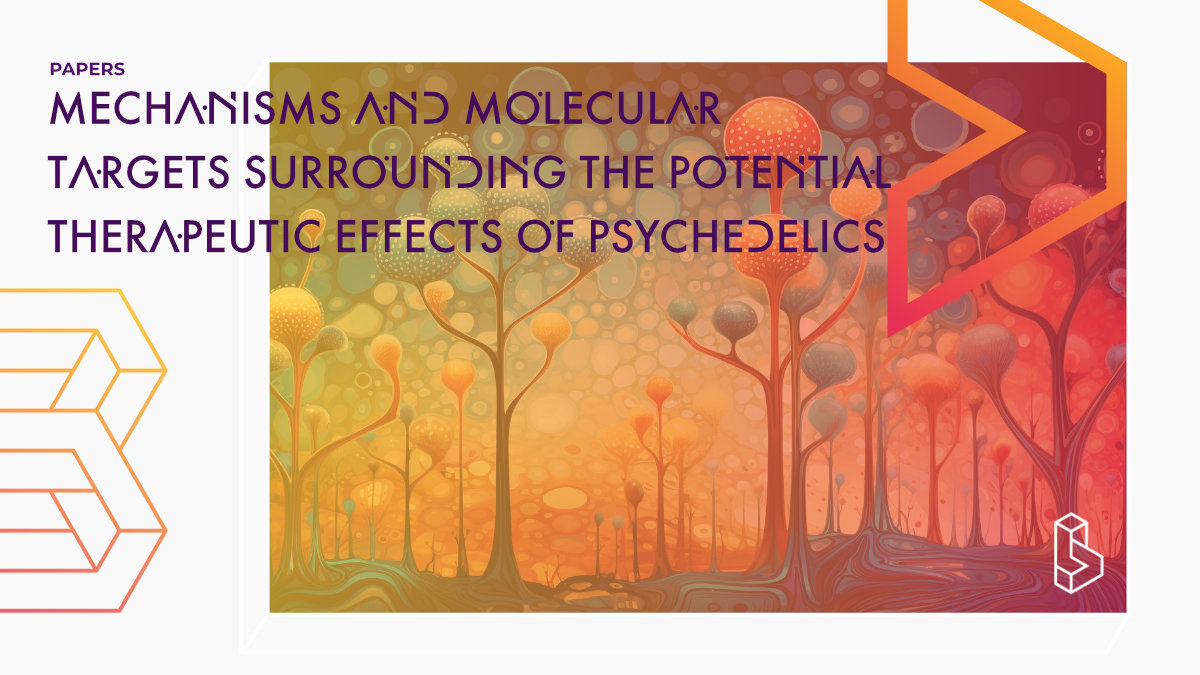This review (2023) discusses the investigation of psychedelics for their therapeutic potential in neuropsychiatric and substance use disorders. Clinical trials have shown promise in alleviating symptoms of depression, anxiety, and reducing nicotine and alcohol use. The underlying molecular mechanisms for these therapeutic effects are not yet fully understood, with ongoing preclinical studies exploring the role of serotonin 5-HT2A receptors and other pathways. The review emphasizes the importance of the subjective experience induced by psychedelic therapy. Still, it highlights the need for further cross-validation between clinical and preclinical research to fully understand the reasons behind these experiences and their translational validity.
Abstract of Mechanisms and molecular targets surrounding the potential therapeutic effects of psychedelics
“Psychedelics, also known as classical hallucinogens, have been investigated for decades due to their potential therapeutic effects in the treatment of neuropsychiatric and substance use disorders. The results from clinical trials have shown promise for the use of psychedelics to alleviate symptoms of depression and anxiety, as well as to promote substantial decreases in the use of nicotine and alcohol. While these studies provide compelling evidence for the powerful subjective experience and prolonged therapeutic adaptations, the underlying molecular reasons for these robust and clinically meaningful improvements are still poorly understood. Preclinical studies assessing the targets and circuitry of the post-acute effects of classical psychedelics are ongoing. Current literature is split between a serotonin 5-HT2A receptor (5-HT2AR)-dependent or -independent signaling pathway, as researchers are attempting to harness the mechanisms behind the sustained post-acute therapeutically relevant effects. A combination of molecular, behavioral, and genetic techniques in neuropharmacology has begun to show promise for elucidating these mechanisms. As the field progresses, increasing evidence points towards the importance of the subjective experience induced by psychedelic-assisted therapy, but without further cross validation between clinical and preclinical research, the why behind the experience and its translational validity may be lost.”
Authors: Alaina M. Jaster & Javier González-Maeso
Summary of Mechanisms and molecular targets surrounding the potential therapeutic effects of psychedelics
Introduction
Psychedelics are a class of pharmacologically active compounds that cause changes in perception, cognition, and sensory processing. They are used ceremonially and medicinally in many cultures around the world, and have been noted to produce effects similar to symptoms reported in schizophrenia patients.
When administered to patients with schizophrenia or related neuropsychiatric conditions, LSD increased activity, sociability, and emotional understanding, and some patients were able to re-evaluate the emotional meaning of some of their symptoms, and improved.
After increasing use in experimental psychiatry, interest in brain chemistry and clinical evaluation on human subjects increased. However, the growing interest in LSD by the scientific community trickled into the counterculture of the 1960s, where it became a popular recreational drug, leading the U.S. Government to declare a War on Drugs. Recent years have brought advances in our understanding of the basic mechanisms related to the effects of classical psychedelics.
Find this paper
Mechanisms and molecular targets surrounding the potential therapeutic effects of psychedelics
https://doi.org/10.1038/s41380-023-02274-x
Paywall | Google Scholar | Backup | 🕊
Cite this paper (APA)
Jaster, A.M., González-Maeso, J. Mechanisms and molecular targets surrounding the potential therapeutic effects of psychedelics. Mol Psychiatry (2023).
Study details
Topics studied
Depression
Alcohol Use Disorder
Anxiety
Addiction
Study characteristics
Literature Review

